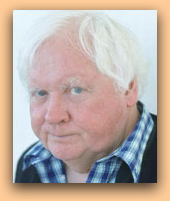
FEST2003
Lost in Convention:
An Interview with Ken Russell
By Rada Djurica
(continued)
You made the film "The Devil," and three months ago the
public first saw the controversial scene that had not been included in
its original release. Can you describe the scene and say why you think
that it was one of the best scenes that you have made?
I don't think that I've said that was one of the best scenes I have ever
made. The film was made in 1971. The scene will make sense only to the
people who saw the film.
Basically, the convents of nuns were pretending that the devilish spirit of the priest possesses them. And they were all encouraged in the cathedral to help the devil come out. These were things happening in the 17th Century. The authority wanted the wall of the city destroyed and the defense was totally gone. They made the diversion that the priest was against the king and the cardinal, and he should be accused of being the devil and possessing the nuns. And the performance was the nuns freaking out. And the combination of the nuns tearing out the right side of the crucifix of Jesus Christ above the altar, rubbishing/ravishing it. That scene was the combination of all false accusations of the devil possession and was very essential, but it was cut. It's still quite powerful and it gives actually more power to the scene.
There has been a documentary on this particular missing scene, recently, on English television, and they took this scene to a priest in the Royal University of Chicago, asking "Do you think that this scene is heresy?" And he said, "I saw that. I was in London, and I saw that scene in progress and I don't think that is heresy at all. I think it was an essential part of the film and I'm sorry for it not being in there." And that's the situation.
I agreed for that material to be used on the television on terms that
were agreed. But there was a rumor about the Warner Brothers Company who
would license the film, in which case it would be released within the
missing project.
What actors were most difficult to work with, maybe Oliver Reed, who
also had a similar ego and temperament?
I don't remember the actors that I didn't get along with, but there are
still some actors that I will never forget: Glenda Jackson and Oliver
Reed. Work with them went on an almost telepathic manner. Once we read
the script and discussed the characters, there was not much work to be
done.
But I've worked with Oliver Reed on a number of BBC documentaries and some feature films. And we quickly devised our method of working together, bearing in mind the speed of the filming and that the actor knows the story and actual limitations. We had a very short communication, depending on the amounts of intensity of the scene. We called it very simply Moody1, Moody2 and Moody3.
With Glenda Jackson I had a completely telepathic relationship. I was
doing the scene in the film called "Salome's Last Dance," and
she played the queen. And we were just about to shoot the scene after
lunch, and we expected that she was studying her role. But when I knocked
at the door, went in, she was reading a woman's magazine, chewing gum,
smoking a cigarette, and listening to jazz on the radio. And I said, "Are
you ready for the scene, Glenda?" And she asked, "What we doing
today, Ken? Ah, no problem." So she took out her gum, put out her
cigarette, closed the magazine and gave the greatest performance of her
life. So, she's special. And that's show business!
What has happened with the films about the great English poets?
I'm not sure that I understand the question fully but I would say that
all artists that I make films about, naturally, are ones that I have special
affinity for. Many years I've lived in a district just below Scotland
where one of the great poets lived, and I've felt the natural affinity
to make a film about it.
Are we going to have a chance to see the biographical film about Nikola
Tesla? In what stage is this film project?
We all hope that will start shooting in early summer in the country. We
have a script which I've finished, with the goal of showing how he was
a great man. And we can't wait to get started, because this man was a
genius. We are going to use cinematic tricks to be absolutely mind blowing.
When we can expect it to be finished? Who is the producer of the film?
Can we hear some details?
We can't tell you everything, because there are still negotiations about
the film. I hope that we will finish everything by Christmas.
Who will be playing Tesla? We heard it would be Jack Nicholson?
He's too old to play Tesla. But he could play Tesla's father, or even
a grandfather like Jack Nicholson. He was in "Tommy;" he was
very good. He doesn't wear underwear.
Can you tell us something about the project?
I'm afraid you have to wait. It's too early, too many egos involved.
How about Rade Sherberdzija to be Tesla?
I like the actor, but he's too old. They are all too old.
Is there any younger film British director that you admire?
No, but there are plenty of older directors that I admire.
portions of this interview also appear in the print
magazine AfterImage
